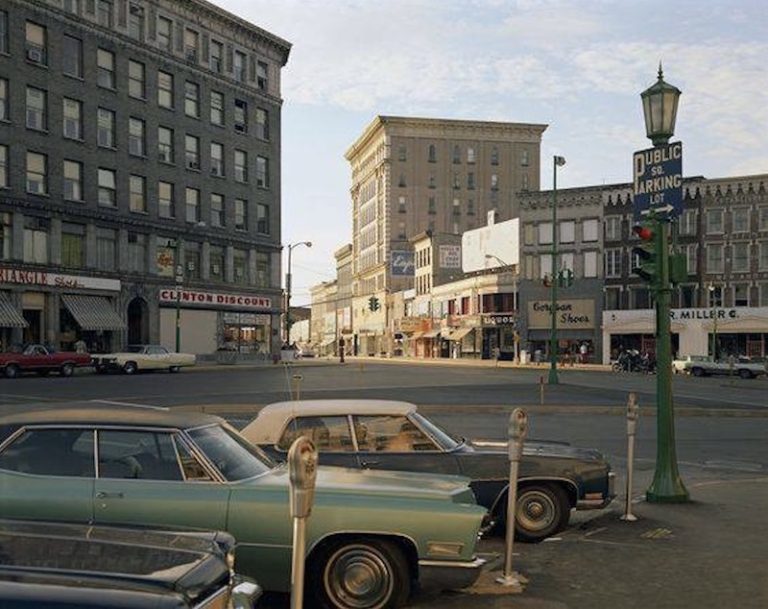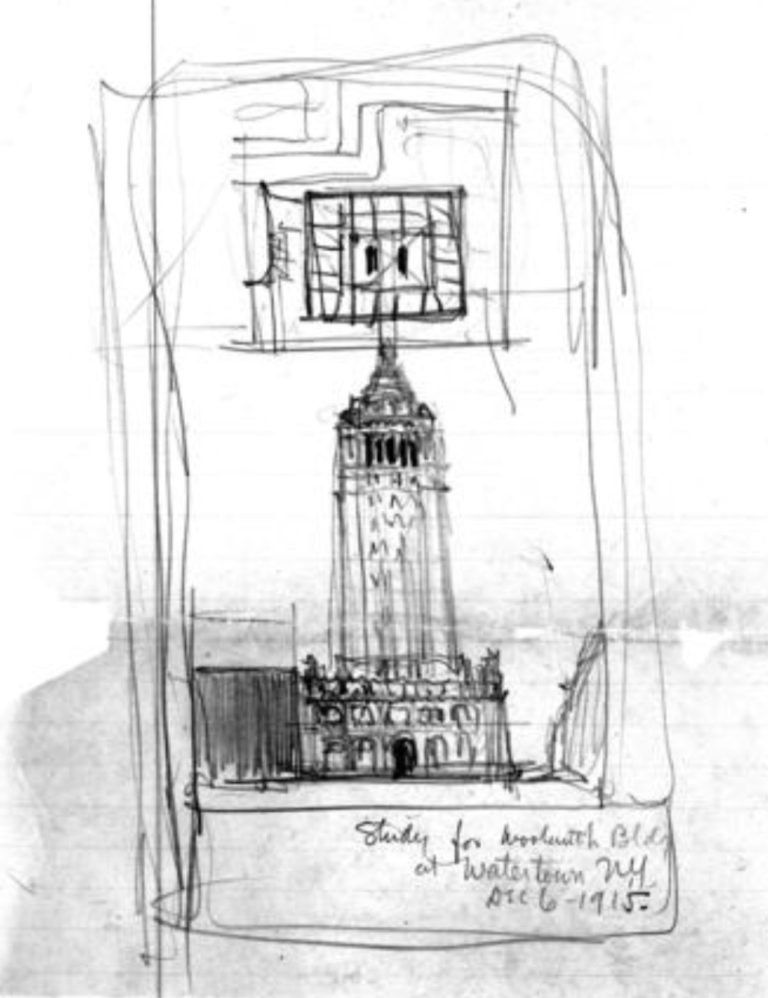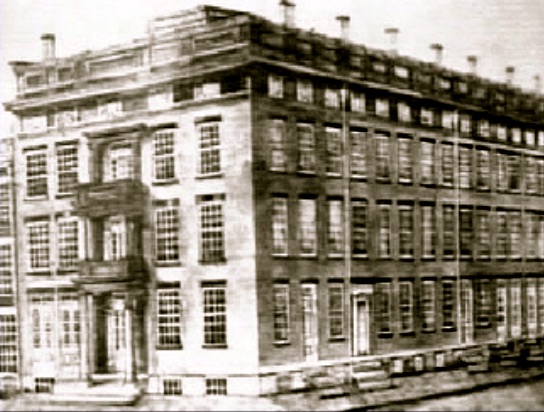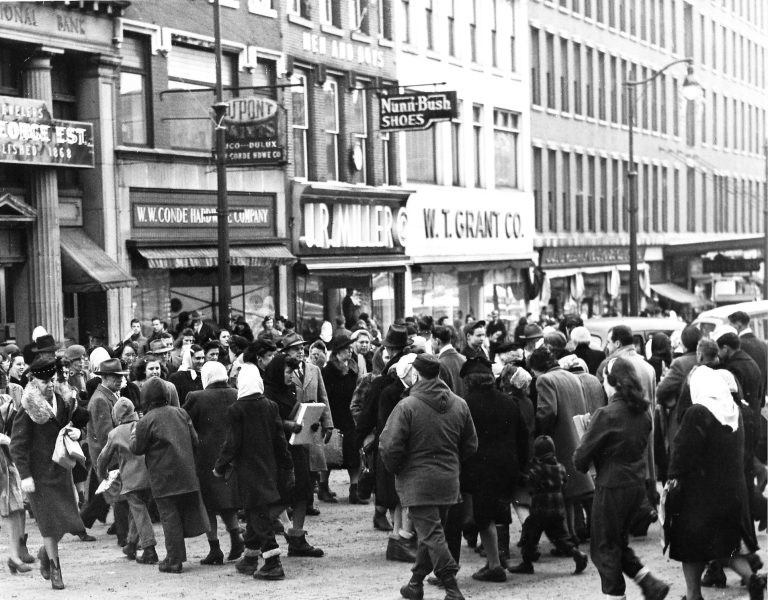F. W. Woolworth’s Vision Of The Woolworth Building on Public Square Was Much Different
Although F. W. Woolworth had architectural plans in development for a new Woolworth building in Watertown, completed by Cass Gilbert, a notable architect of the Woolworth Building in New York City and then the largest building in the world, it was the death of W. H. Moore in 1916 that led to the negotiations for the project to move forward.

The American Building, where the Moore store, in which F. W. Woolworth once worked, had been purchased by Emily Woodruff Keep Schley back in 1871 to provide financial support to the Henry Keep Home on Washington Street in honor of her late husband. With the help of Roswell P. Flower and other notable citizens, the purchase of the building, as with the Paddock Building, too, would ensure a continual source of revenue to fund the operations of the Keep Home via rent for years to come.
While in Watertown and attending the funeral of his former boss, F. W. Woolworth, met with the board of trustees of the Keep estate. The conference lasted into the evening when, at 8 p.m., an agreement was reached to ensure the Keep Home’s financial security for just shy of the next century. The Woolworth company took lease of the property for 99 years, beginning January 1, 1917.

Had F. W. Woolworth’s original plans been successful, the profits may have been either astronomical or a complete disaster if it were never been fully utilized. On November 21, 1916, those initial ambitious plans would be revealed in the Watertown Daily Times—
It became known today that the new Woolworth building to be constructed in this city will be 14 stories high, and of steel construction. Plans have already been drawn and the building will be erected in record time after ground is broken. A 14-story building will be the highest building in New York State north of the main line in the New York Central.
It is said that Mr. Woolworth has already purchased the steel for the construction, and as soon as the weather permits in the spring the work of razing the American block and art of the Paddock block will be started. The Paddock block property includes the Herrick drug store, the Baird jewelry store, the Jefferson store and the Bannister store.
Plans for the building were drawn by Cass Gilbert, the architect for the original Woolworth building, and it is generally understood that the building will be a replica of the famous building in New York. Some idea of the height of the building can be gained by imagining the Solar building of six stories set on top of the Rothstock of eight stories.
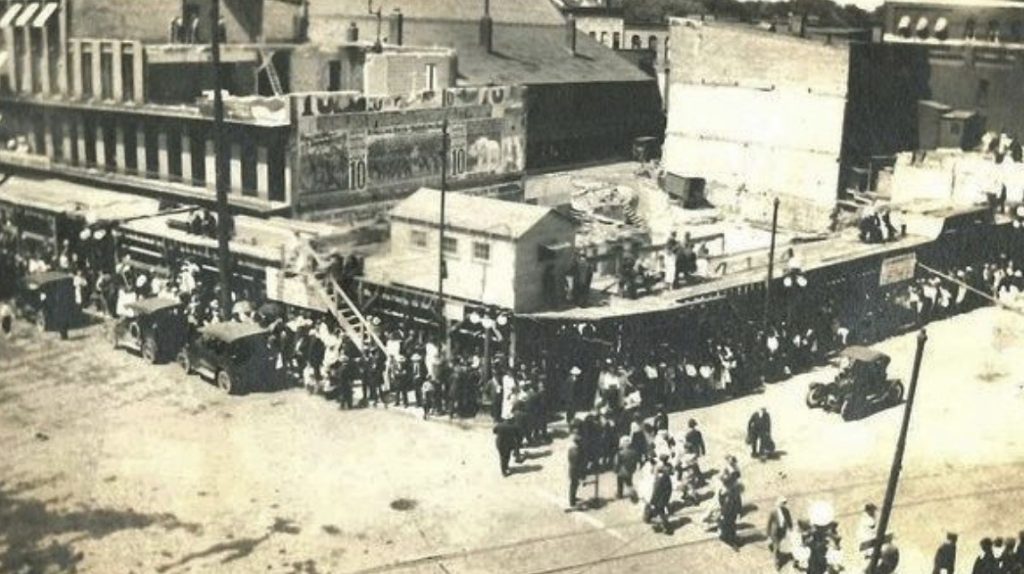
The continuing war and availability and pricing of materials delayed the start of construction, and by the end of November 1918, it was hoped that with the war over, construction would start in the spring. F. W. Woolworth was eager to get started on the colossal project.
Instead, springtime brought the end for F. W. Woolworth on April 8th, 1919. Mr. Woolworth had been in failing health after suffering a nervous breakdown six years prior and had recently retreated to his Glen Cove property Winfield Hall on Long Island on the advice of physicians. He developed a cold on the way and became increasingly weakened, his cause of death determined as “nervous exhaustion and septic poisoning,” but later noted as “influenza, followed by diabetes.” The man who once borrowed $300 to start an empire that grew to profits of $8,000,000 a year by 1919 ($133 million in 2020 currency) was no more.

With the death of F. W. Woolworth came some uncertainty with the prospects of the new building. Hubert Parsons eventually succeeded F. W. as head of the Woolworth Syndicate and, at one point, owned the mega-mansion Shadow Lawn in New Jersey. While the city of Watertown was assured that a new Woolworth building would be built, some favored a smaller building more fit for the smaller city.
Months before the work commenced, the initial plans were scrapped in favor of a 6-story building, architecturally different and not a replica of the original as initially conceived, with the possibility of it being 8 stories if the city believed it warranted. The new Woolworth store would occupy most of the floor space on the ground floor, while the building itself would be modest and “plain” Renaissance style compared to the no-expense-spared original intention. In the end, the city engineer deemed a 6-story version to be better due to the increase in wind and lack of sunlight on Court Street, which may result in a taller structure.

Construction began in late July/early August 1920, with excavation of the American Building cellar and laying of the sewer lines. Work was slow-going due to labor scarcity despite jobs paying .05¢ above union jobs. With a small army of workers, the hopes nearing the end of October were to have as much of the structure enclosed before colder temperatures set in. But as the razing of the building and ground excavation began, other “things” moved out.
The old American Building had been home to a rat infestation. Those rats were now migrating across Arsenal Street to the Fairbanks Building. As told in the Jan. 27, 1921, Watertown Daily Times—
With a total for the 1920-1921 season of nearly 300 rats killed by personal contact, and a record of 45 rats killed in ten days, James W. McGregor, janitor of the Fairbanks building is believed to have a legitimate claim to the championship honors of rat catching and extermination for Northern New York. Mr. McGregor carried on the greater part of his crusade for the extermination of the rodents in the boiler room of the building, to which place the rats came for bodily comfort, there being but a few rats which met their doom in the stores and apartments of the building.

With the completion date pushed back several times, work continued at a feverish pace as tenants began to line up well before completion. Glass for the new storefront of F. W. Woolworth was to be put in place in late May by the Pittsburgh Plate Glass Company. June saw a team of 10 men decorating the Woolworth store rise to 40 strong to make an exact duplicate of the 5th Avenue store in New York City.
July 22, 1921, marked the official opening for public inspection only of the new Woolworth Five and Ten Cent store, with a public reception in the afternoon and evening. The Times reported on the event—
Promptly at 2 this afternoon the doors of the new Woolworth store swung open to the public for the first time and for three hours thousands thronged the aisles of the building. It is estimated that 3,000 persons passed through the store this afternoon and the crowd this evening when the store is open from 7 to 9 will probably be as great. No business is being done today, the store being open for inspection by the public only.
The display windows of the new store present an appearance surpassed by no other in the Woolworth organization, said Mr. F. J. Wekesser (a former employee of the Bush, Bull and Roth store in Watertown, now a member of the executive committee of the Woolworth company). Only the finest gold leaf is used in them as the background.

For approximately the next 50 years, Woolworth’s was a fixture on Public Square’s American Corner. Over those years, the store saw the opening of its famous lunch counter and the likeness of its storefront gracing the cover of the 1954 Woolworth Catalog by artist Paul Rabut, who was commissioned to create the painting by Woolworth Co.
In 1968, the Woolworth Company was the first major retailer to announce its relocation to the planned City Center Plaza as a result of urban renewal, leaving the Woolworth building and opening in its new location at 146 Arsenal Street in June of 1971, almost 50 years (minus one month) after its opening in 1921 at the Woolworth building. The Woolworth Company donated the Woolworth building to the Henry Keep Home to include all of the revenue-yielding leaseholds, which were to expire in 2015.

In the years after Woolworth Co.’s departure, it has been home to several chain stores including Rite-Aid and CVS. During that time, the building gradually deteriorated until it became necessary for costly expenditures to prevent it from being lost and preserve it for future generations.
In the fall of 2013, a $17 million project began to rehabilitate, renovate, and restore the landmark building. According to The Times, the project’s funding came from multiple sources including private investment, state Homes and Communities Renewal housing tax credits, a $2.5 million Restore NY grant, and other state funding.
Below: A tour of the renovated Woolworth Building produced by the Watertown Daily Times and posted on their YouTube channel on January 16, 2016.
The building was converted into mixed-use, with 11,000 sq. ft. of office and retail space on the ground floor and residential units comprising the bulk of floors two through six. The numbers amounted to 35 one-bedroom units and 15 two-bedroom units. In January 2015, the work was completed a single day ahead of schedule and under budget. A tour of guests drew accolades printed in The Times—
Many of the tour mentioned that the corner apartment —the first one rented—has a great view of Public Square, especially of the city’s lights and decorations during the holidays.
“You’ve really done a great job,” John K. Bartow Jr., a member of the city’s Citizens Advisory Board, told Mr. Seber.

The next phase, to find commercial tenants, was a challenge. EyeCrave Optics leased space and opened in late 2016. Its owner, Jody Shuler, believed in the future of downtown, but sadly passed away in June of 2020, and once again, the storefront sat vacant.
Most recently, in late October of 2021, BCA Architects, formerly located in the old Mullin Street school, announced their desire to be part of the downtown revitalization and would be moving into the building in 2022. The firm employs nearly 60 people in Watertown, and their presence will surely add new life to the building and the surrounding area.

F. W. Woolworth’s Rules Of Success
Below is a list of 7 rules of success F. W. Woolworth had which were printed in the April 1919 edition of the Watertown Daily Times at the time of his death:
First—Of course you will be discouraged. But keep on.
Second—If you believe in an idea, give it a chance. Some of my first stores failed because I had not studied the situation thoroughly. I placed my stores in the wrong part of the town. There’s a right place. Find it.
Third—Everybody likes to make a good bargain. Let him. Small profits on an article will become big profits in you sell enough articles.
Fourth—I believe in doing business by and with cash. I had been in business several days before I knew how to make out a check. Large credit is a temptation to careless buying.
Fifth—Supervise details, but don’t allow them to absorb you. Don’t waste the time of high priced organizer on a clerk’s job.
Sixth—I prefer the boy from the farm to the college man. The college man won’t begin at the bottom and learn the business.
Seventh—There are plenty of opportunities for young men today. Many fail because they are not willing to sacrifice. No one ever got far who was in bondage to the body. You can’t build a business on thoughts of having a ‘good time.’




